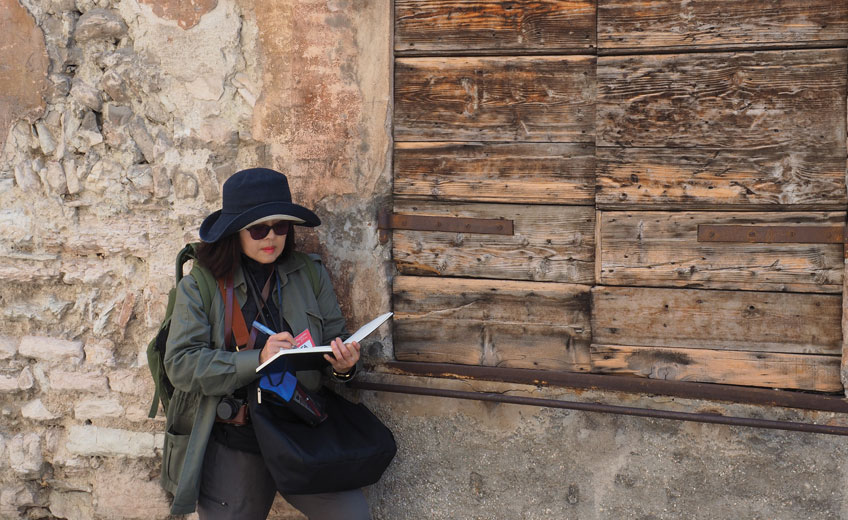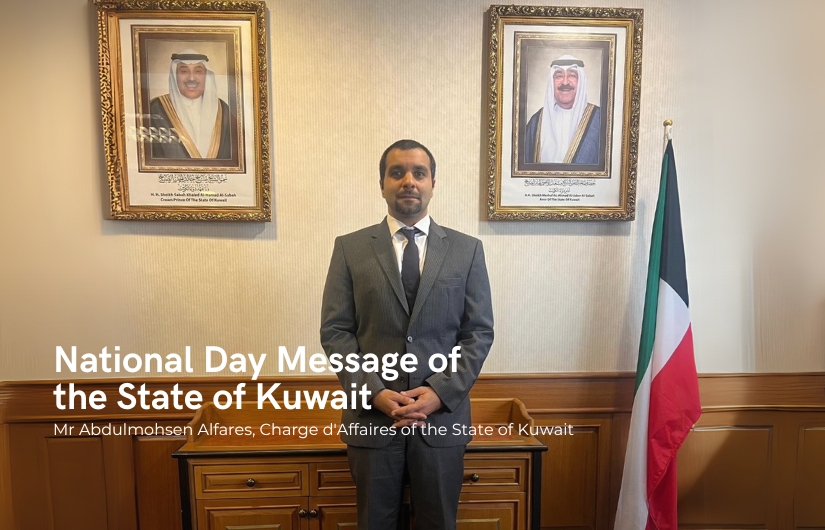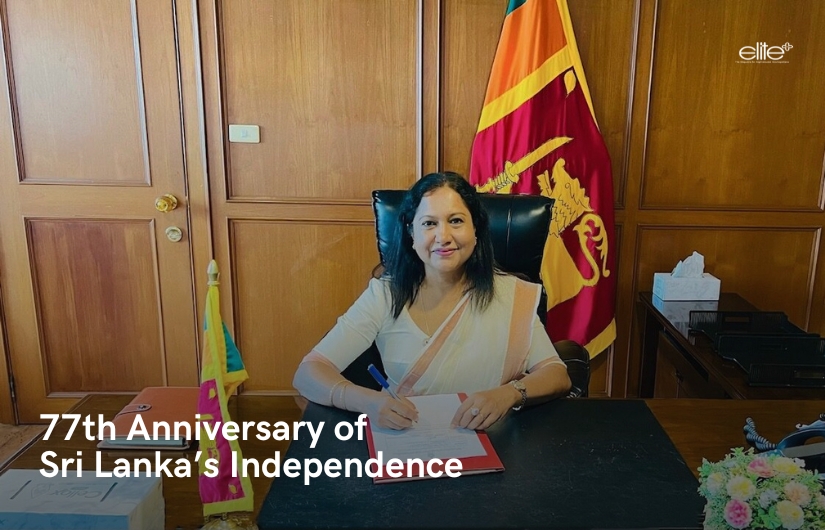For most travellers, capturing the moment means quickly snapping a picture with their smartphone, tweaking it a little with an image-enhancing application and sharing it on social media. But for Lalita Rochanakorn, it still means the long and meticulous process of drawing.
She calls herself an amateur painter, but her watercolours of landscapes and people as well as stunning botanical studies rank her among top professionals. With four books, more than 10 solo exhibitions in Thailand, Japan, Switzerland and up to 20 joint exhibitions across Europe, Asia and the US, Lalita is known and respected – especially in Switzerland, which she and her husband call home – as an artist with a keen eye and talent that uniquely captures the heart and soul of objects and depicts them with great finesse and attention to detail. Among her accolades is a Silver Grenfell Medal from the Royal Horticultural Society in London in 1999 for her paintings of ivy leaves.
Born and raised in Bangkok, Lalita has a degree in history and French civilization from Sorbonne University in Paris. She moved to Geneva in Switzerland in 1982 and then followed her husband – who worked for the United Nations – to China, Sri Lanka, Japan and Russia, never missing a chance to learn about art and culture from local experts and artists.
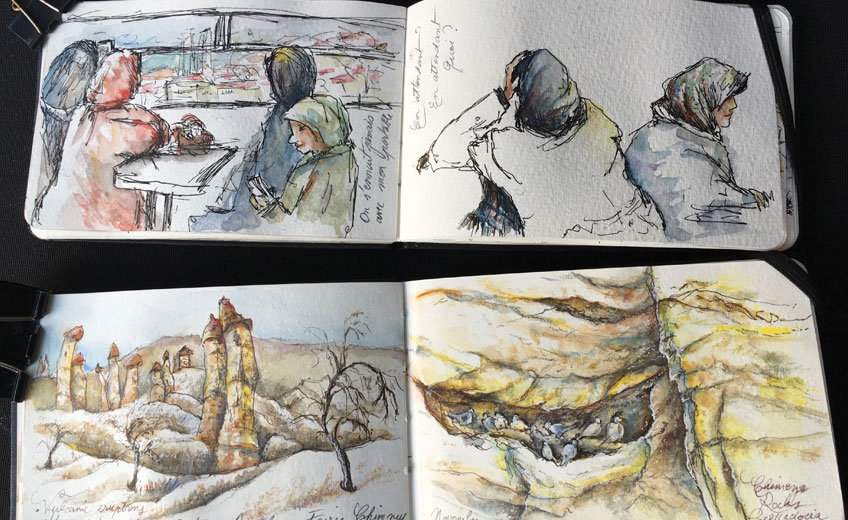
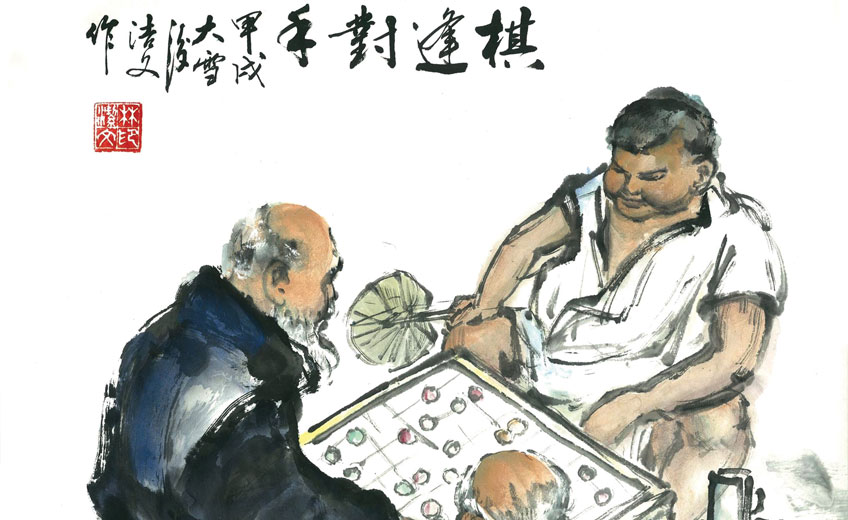
Now with a new book under way and an exhibition in Italy in May, Lalita spoke to Elite+ at her Bangkok home during the holiday break to talk about the allure of drawing in situ.
How did you start painting? Is it something you’ve always had a passion for?
Yes, I have been drawn to drawing since I was young and have been practising it since. But I did not have a chance to learn drawing at university because I majored in French and business. After that, I got married and started my job at the French embassy. It was then that I had an opportunity to learn from various European artists, as well as a Thai artist, Master Uab Sanasen. I took private lessons in oil painting with Master Uab every Saturday when I was working at the French embassy and also had a solo exhibition at Dusit Thani, Bangkok.
When I was in France, there were several artists teaching me about watercolours. I prefer private lessons to group sessions since they make me more focused and engaged. When my husband was transferred to China and we had to spend three years there, I learned Chinese watercolour painting from an expert.
What about art appeals to you so much?
I love travelling and I think painting is a great way to capture experiences, and thoughts and feelings about people from different cultures and backgrounds. Wherever I am, I try to use drawing to express thoughts and meanings, as well as learn about different people and cultures. I use my pieces of art not just to communicate but also to express.
I also learned how various colours reflect different feelings. When I was in Japan, I learned Japanese flower arrangement, called ikebana, which is used to pay respect to other people and express one’s love. In Europe, I learned how to paint porcelain. So for me, drawing is not the only tool I use. All kinds of art can be used to express our thoughts and feelings.
You have done quite a number of landscape paintings.
Yes, and also paintings of people and their daily lives. When we were living in Geneva, a few Swiss artists and I did a book, Walks in Terre Sainte, with eight villages in Terre Sainte where I captured the unique charm and landscape as well as the lives of the people. This project was supported by the Swiss government and it was very well received not only by the art-loving public but also the villagers. It helped them see their own village and their neighbours in a new light. The pictures were used by Swiss officials in various projects to promote harmonious living among the people.
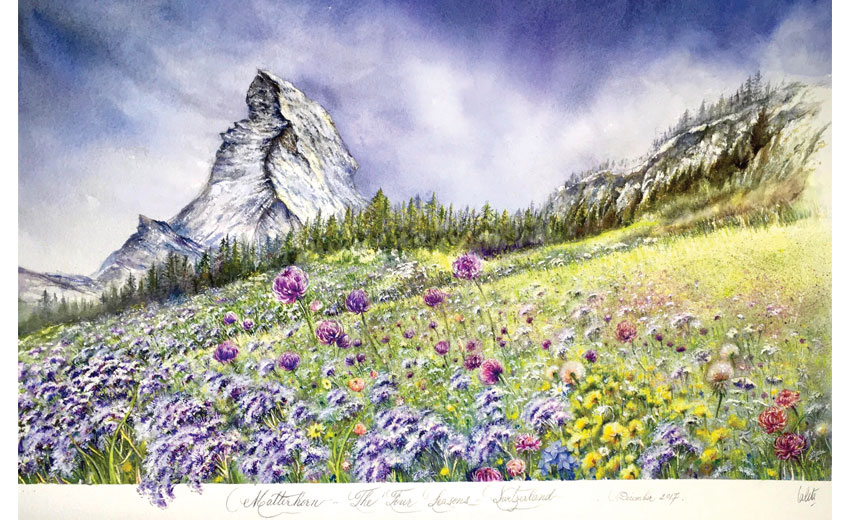
What are the challenges of drawing in situ?
Time and space, mainly. You have to pick the right time and the right spot to fully capture the spirit of it. One time, for the Terre Sainte project, we waited for a while for a village to become fully decorated for Switzerland’s National Day. We rely so much on the natural surroundings, so weather also comes into play. Sometimes it just started to rain when I was only halfway through a painting. You have to find the best spot to capture the whole landscape and avoid crowds. For me, I don’t use too much imagination with my paintings and I tend to depict exactly what I see. If a house has one window, there will be one window in my painting. I guess it is something I adopt from botanical drawing.
How did you get started in that?
I had the opportunity to work with API (Asian Public Intellectual Program), where I was sent to draw various species of endangered plants and flowers. I travelled to many places around Asia to draw and help conserve them.
And because the purpose of botanical drawing is to preserve, the details have to be accurate. Botanists use our work to see how species of plants evolve, adapt and grow in different climates, geography and conditions. It requires such concentration to get the details right because some flowers may look similar but they are not. I remember doing a project for the Doi Tung Development Project Mae Fah Luang Foundation under Royal Patronage, and I had to redo my painting a few times to get the tiny little dots on a wild orchid’s petals right.
Which species is your favourite?
Vanilla kinabaluensis is unforgettable. It is a vanilla flower, a kind of orchid, of Mount Kinabalu in Sabah, Malaysia. I went there with a female officer who told me I had to climb stairs to see the flower that grew on a big, tall tree. I was very lucky to capture them in full bloom because they bloom once a year for only one day. After the painting was published in a botanical magazine in India, an American botanist asked for my permission to use it in his magazine. He said he had visited Mount Kinabalu twice and never had an opportunity to see this flower blooming. I wholeheartedly gave my permission. In fact, my paintings are given away for free for preservation work.
.jpg)
How do you prepare yourself when travelling alone to draw?
I always have detailed plans. I have to prepare all of my stuff before travelling. And as I become older, I always think of security. I have to think about suitable clothes, and how to conceal pricey equipment and belongings. If I have to take the train, I pay for a first-class ticket in order to keep myself safe. I have to keep my eye on everything. There should be at least one person that knows where I am going and what I’m doing.
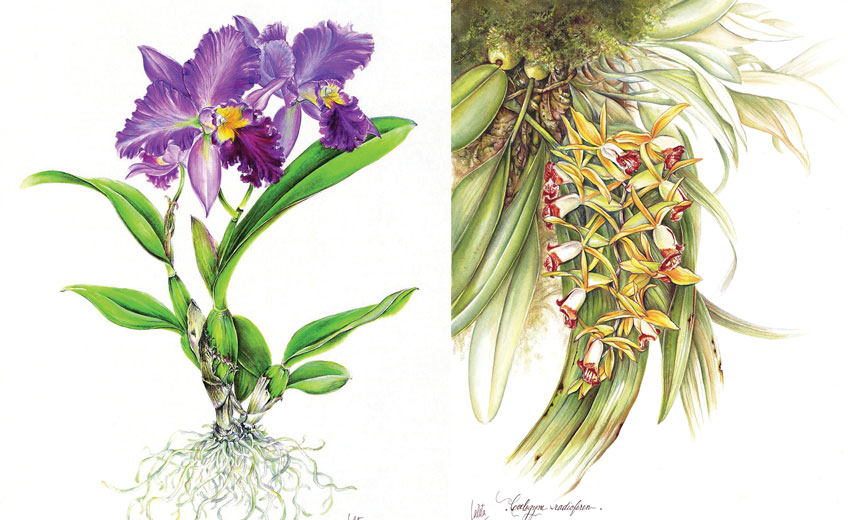
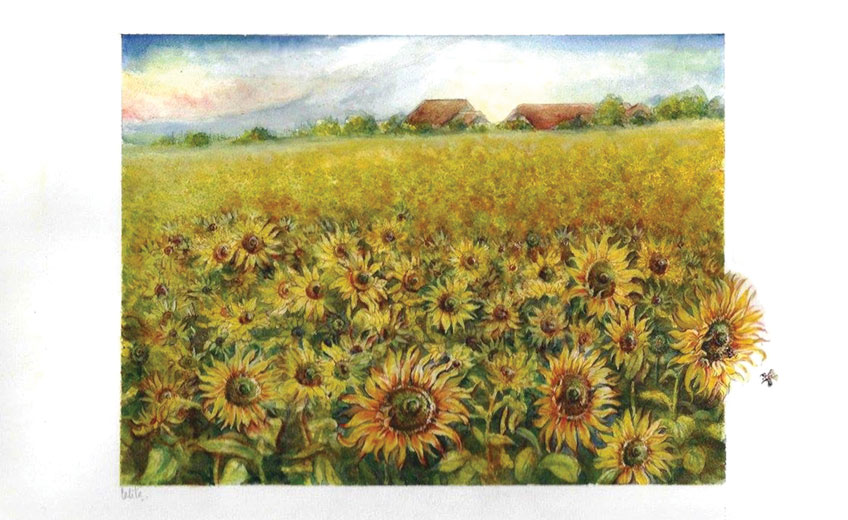
Do you have an idol in the field?
I love Van Gogh. I love the way he uses blue and yellow in his paintings. Yellow is hard to use. Yellow to me feels like someone is shouting in your face. It is stronger than other colours and hard to control, but Van Gogh’s technique is unique. He is excellent at using such combinations. It is obvious in the pictures of sunflowers and the blue field. I also like the way he uses his brushes. It is powerful and meaningful. All of these make his pictures unforgettable. For Thai artists, I admire Master Suchao Sitkanet. I have known him since I was learning with Master Uab and he taught me a lot before he passed away.
How does this hobby fulfil you?
It’s very rewarding because not only do you get a painting of a beautiful flower, you also help preserve it. Botanical drawing helps me think and concentrate. It’s very peaceful, almost like meditation, focusing on small details of nature’s wonderful creations.
Urban sketches and drawing have the same effect. For me, the most fascinating moment is when I bring up a pencil and a piece of paper, and then think of what I will draw. Within such a process, I reflect upon myself and face my own thoughts and memories. This process makes me feel peaceful. It allows me to review things in the past.
Nowadays, we have technology that helps us communicate with each other, but I still love writing letters with my hands, because handwriting reflects feelings and emotions. This is what computers and technology cannot do. My daughter and I still send letters and postcards to each other. I feel like the whole world stops when I’m drawing. It is the moment when I can stop thinking and stop worrying about others. For me, it is the moment of happiness.
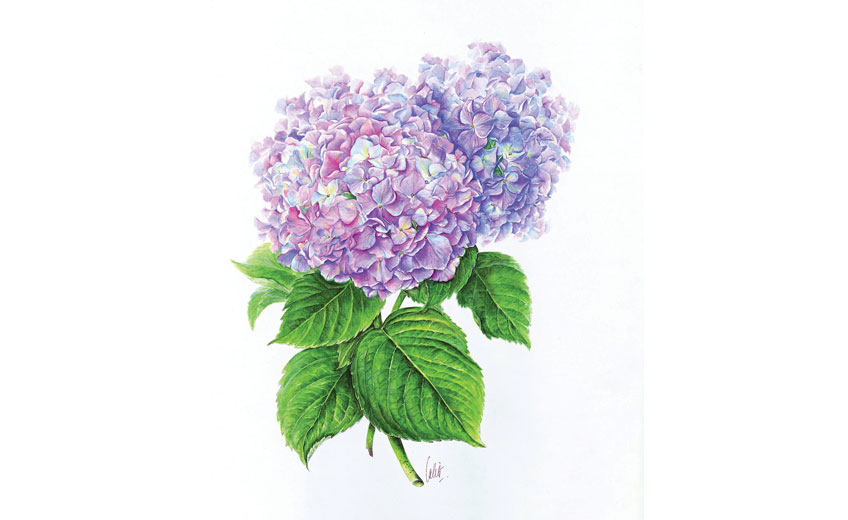
Video : http://bit.ly/2IAmh39


